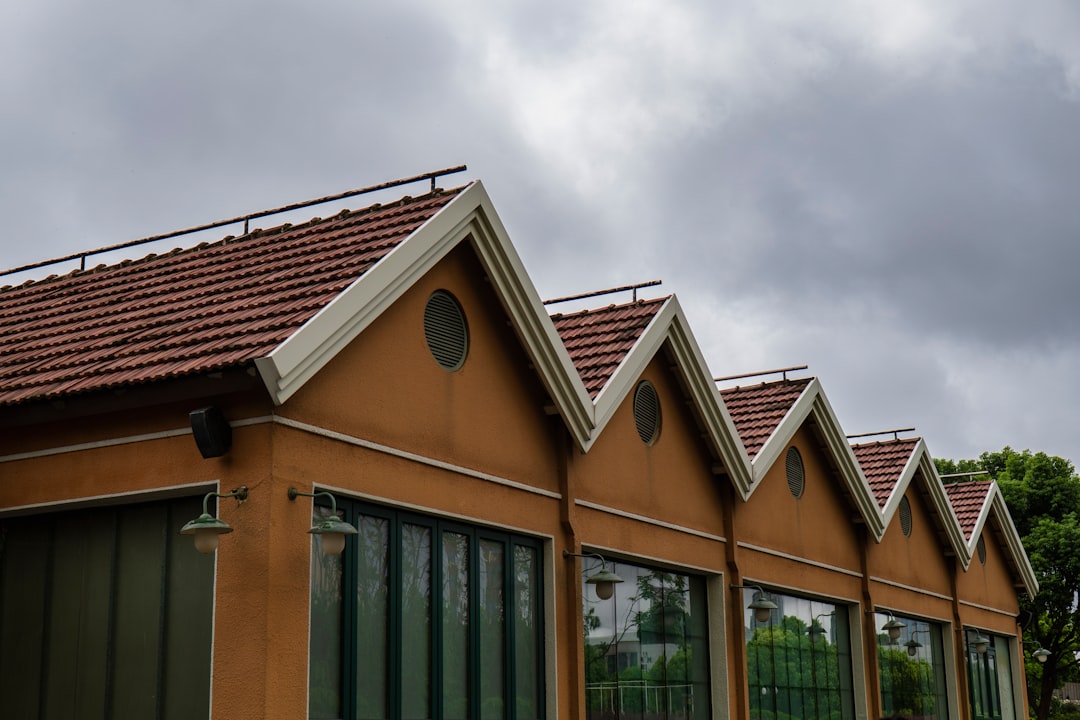

Engage prospects with a scan and streamline customer engagement with FREE QR code marketing tools by Sona – no strings attached!
Create a Free QR CodeFree consultation

No commitment

Engage prospects with a scan and streamline customer engagement with FREE QR code marketing tools by Sona – no strings attached!
Create a Free QR CodeFree consultation

No commitment
Flat roofing contractors operate in a highly competitive market where both residential and commercial buyers seek faster, simpler ways to evaluate service providers and connect with experts in flat roof installation, repair, and maintenance. Today’s customers expect frictionless access to information, transparent pricing, and trustworthy service, all while navigating a variety of flat roof materials and complex insurance or compliance requirements.
Many contractors find that the traditional ways of attracting and engaging high-value prospects, such as relying on website form submissions or inbound calls, often leave critical buyer intent invisible and lead to missed opportunities. When potential leads do not directly identify themselves, contractors may struggle to recognize interested parties and lose out to faster-moving competitors. To make that intent actionable, explore intent data.
The adoption of QR codes has accelerated digital transformation in this industry by bridging the gap between physical assets such as yard signs, project brochures, or site vehicles and digital actions such as estimate requests, flat roof maintenance tips, or contractor reviews. By reducing offline-to-online friction, QR codes in marketing help contractors stand out, capture demand at critical decision points, and address common frustrations of lost or delayed prospect engagement.

Flat roofing contractors often rely on analog workflows such as printed estimates, in-person consultations, and signage that requires manual follow-up. These methods make it difficult to track which interested parties actually take the next step, leaving high-value prospects unrecorded in the CRM and creating risk for lost business. In busy seasons, a few missed calls or untracked conversations can translate into weeks of lost revenue and an inaccurate forecast.
QR codes replace these outdated approaches by enabling instant access to project galleries, quote request forms, flat roof repair scheduling, or flat roof material comparisons, all with a simple scan. This immediacy reduces the lag between interest and engagement and addresses late or incomplete lead capture. When every sign, truck, brochure, and invoice becomes an interactive touchpoint, contractors create a consistent digital on-ramp that moves prospects from curiosity to commitment.
Integrated solutions can automate QR code creation, audience segmentation, and CRM syncing so that even anonymous website visitors from a QR campaign can be recognized and prioritized. With Sona QR and Sona, flat roofing teams gain end-to-end visibility from scan to revenue and can adapt messaging and offers in minutes without reprinting materials.

Flat roofing contractors often struggle to convert roadside viewers into leads or to turn printed maintenance reminders into actual service appointments. Traditional print and signage inform, yet they rarely capture who is interested or what action they take next. The result is a pool of invisible demand, partial attribution, and lost opportunities to educate buyers on materials like TPO, PVC, and EPDM or to promote preventative maintenance that protects roofing warranties.
QR codes offer a reliable solution to these pain points. They provide a simple, one-scan action that shortens the path from discovery to engagement, unlocks measurable data, and enables teams to update content after printing. For additional context, review how QR codes in construction deliver practical benefits. For contractors who manage seasonal promotions, emergency repair queues, and multi-property maintenance programs, QR codes deliver the speed, flexibility, and intelligence that traditional media lacks.
For flat roofing contractors, QR codes turn static assets into responsive, lead-generating tools that accelerate the buyer journey. They also surface signals that were previously invisible, such as which job-site signs draw the most interest or which brochures generate the most material comparison activity.

Choosing the right QR code format ensures that the action you want a prospect to take is clear and frictionless. Flat roofing contractors benefit most from formats that capture contact details, streamline bookings, and deliver context-rich information at the moment of need.
Use these formats to match each scenario to the action you want:
Dynamic QR codes are preferred for most marketing campaigns since you can update destinations as offers, pricing, or capacity changes. Static codes work for evergreen assets like a vCard or a link to your safety certifications. Sona QR supports both and allows centralized management so your team can switch destinations without replacing printed materials.

Profitable placements align QR codes with moments of high intent, where a scan translates naturally into a valuable action. In flat roofing, those moments occur at job sites, during service handoffs, and in high-visibility environments where buyers assess credibility and readiness.
Think about your marketing and operations footprint, then activate the touchpoints that already work for you:
Aligning QR placements with typical customer touchpoints ensures maximum visibility and conversion. It also helps eliminate the inconsistent messaging that can cause confusion or disengagement, especially across residential and commercial lines of business.

Across residential and commercial projects, thoughtful QR deployment converts everyday materials into measurable, revenue-driving assets. The following use cases map directly to common customer interactions and decision points.
Each use case can be customized by audience. Homeowners value immediate repair scheduling and financing calculators. Facility managers care about safety documentation, bid specs, and maintenance logs. Sona QR enables content routing so each segment lands on the most relevant next step.
Every QR scan is a signal of intent and context. By deploying multiple QR codes across touchpoints, you can automatically segment your audience and tailor follow-up to how, when, and why they engaged. This not only improves conversion rates, it also ensures your team invests time where it matters most.
Start by defining meaningful audience distinctions that reflect your pipeline and services. For flat roofing, valuable segments include new installation researchers, emergency repair seekers, and maintenance program candidates. Then map your QR destinations and tags so each scan builds the right audience.
Push these segments to your CRM for targeted follow-up. For example, trigger SMS reminders for expiring warranties, email a seasonal inspection checklist, or launch ads that retarget recent quote seekers. With Sona QR, scan data can be synced with HubSpot CRM, Salesforce, and ad platforms to automate nurturing based on real behavior, not assumptions.
QR codes unify physical and digital channels to create a connected experience that reduces friction and increases measurability. Without this cohesion, mixed messages and fragmented interactions can frustrate prospects, particularly when multiple stakeholders are involved in commercial roofing decisions.
Integrating QR across your media ensures each interaction has a clear next step and that performance is visible in one place. This boosts the ROI of existing investments such as print, vehicles, and events while opening new opportunities to retarget and personalize.
Centralized tracking turns each scan into a data point on engagement, helping contractors refine media spend and deliver a cohesive journey. Sona QR makes it simple to manage codes, monitor performance, and sync results with your CRM and ad platforms.
QR campaigns work best when they are planned around a specific outcome, designed for real-world conditions, and instrumented for measurement. Use this checklist to move from idea to impact while avoiding common pitfalls like weak calls to action or hard-to-scan placements.
A well-designed QR program should be iterative. Launch fast, measure ruthlessly, and optimize creative, placement, and destination content based on what the data shows. Over time, this creates a reliable playbook for repeatable growth in both residential and commercial lines.
With these steps, your team can move quickly from piloting a few placements to scaling a system that reliably captures demand and accelerates revenue.
Knowing who interacts with your QR codes and how they progress through the funnel is essential for optimizing outcomes. Without solid attribution, marketing spend gets misallocated and your team cannot learn which placements or messages truly influence deals. In fast-moving, high-ticket services like flat roofing, insights about timing, content, and channel can create a material advantage.
A comprehensive analytics approach connects scans to sessions, sessions to form fills, and form fills to revenue. It also captures context such as the type of device, the location of the scan, and the media used. This level of visibility makes it possible to fine-tune messaging by neighborhood, property type, and seasonality.
Sona QR captures every scan and enriches it with context, while Sona.com connects anonymous interactions to known buyers through identity resolution and multi-touch attribution. Together they turn scan activity into a performance signal you can act on, from first touch to signed contract.
Scaling QR success requires both technical rigor and field adoption. Contractors who standardize on tracking, coach teams on when and how to promote scanning, and connect scans to fast follow-up see the biggest lift in booked work and customer satisfaction.
Use these best practices to extend the value of your QR program and to build a library of proven plays across neighborhoods, building types, and seasons.
A creative deployment example: place a QR code on warranty stickers inside mechanical rooms that opens a maintenance log and one-tap service request form. Another idea is to add a QR to your storm-readiness postcards that launches a 3-minute roof health survey, qualifying leads before your team calls back.
Contractors across the country are using QR codes to remove friction, build trust, and capture demand at the moment it appears. The most effective programs blend straightforward calls to action with helpful content, then close the loop with automation and attribution.
Consider these examples as starting points for your own playbook. Each one demonstrates how a physical surface can become a reliable digital gateway that educates, converts, and measures.
You can adapt these ideas to your brand and market. For instance, combine neighborhood yard signs with a QR that auto-loads a pre-filled quote for homes built in the same era, or use QR-coded referral cards that track which customers drive the most new business.
Executing QR programs well is mostly about getting the details right. From sizing and contrast to landing page relevance and response time, small choices make a big difference in scan rates and conversion.
Avoid common mistakes by designing for the real world and by aligning every scan with a clear and valuable outcome. When in doubt, test placements, creative, and calls to action in the field before scaling.
When you combine field-ready design with a benefits-first message, QR codes become a natural part of how prospects learn, evaluate, and buy.
QR codes empower flat roofing contractors to transform every project site, printed asset, and equipment label into a measurable digital entry point. By making it effortless for property owners, facility managers, and general contractors to engage, you unlock higher-quality leads, greater transparency into performance, and a connected journey from initial interest to completed project.
For firms challenged by incomplete data, unidentified traffic, or missed follow-ups, QR strategies surface crucial engagement signals and enable teams to automate, track, and optimize every stage of the customer experience. With purpose-built tools like Sona QR and Sona.com, contractors can streamline lead capture, deliver better service, and gain granular insight into the true drivers of growth.
In an era when buyers expect seamless integration between real-world touchpoints and digital access, purpose-driven QR campaigns turn every surface into an opportunity for engagement. They capture buyer intent at the source, reduce response times, and reveal which messages and placements resonate. By leveraging centralized tracking and intelligent segmentation, flat roofing contractors can gain visibility into previously anonymous leads and minimize the risks of missed opportunities, slow response, or inconsistent messaging.
The path forward is simple. Start with a single high-intent use case such as Scan to book an inspection on job-site signage, deploy a dynamic QR with Sona QR, and connect it to a mobile-optimized form. Track results, iterate on creative and placements, and scale to vehicles, brochures, and direct mail. With a few focused steps, QR codes shift from a novelty to a cornerstone of your growth engine. Start creating QR codes for free.
QR codes have revolutionized the flat roofing contractors industry by transforming traditional job site and client interactions into seamless, data-driven opportunities. From simplifying access to project details and maintenance records to enhancing customer communication and trust, QR codes unlock new efficiencies and elevate the client experience. Imagine instantly sharing up-to-date project updates or warranty information with clients through a simple scan, strengthening relationships and driving repeat business.
With Sona QR, you can create dynamic, trackable QR codes tailored specifically for roofing projects—update information on the fly without costly reprints and monitor every scan to understand client engagement. This means no missed follow-ups, faster decision-making, and clear insights that connect every scan to real revenue growth. Start for free with Sona QR today and turn your flat roofing services into a smart, connected experience that wins customers and builds lasting success.
Professional flat roofing contractors provide expert installation, repair, and maintenance services while navigating complex insurance and compliance requirements, ensuring trustworthy service and transparent pricing.
Choose a contractor who offers transparent pricing, uses digital tools like QR codes for seamless engagement, provides detailed material comparisons, and has a track record of timely response and reliable service.
Common flat roofing materials include TPO, PVC, EPDM, modified bitumen, and various coatings, each with different benefits, lifespans, energy performance, and warranties.
Maintain your flat roof by following scheduled maintenance reminders, promptly addressing leaks, using QR codes on warranty cards for easy access to maintenance schedules, and consulting your roofing contractor for regular inspections.
Signs include leaks, visible damage, aging materials, or failure of the roof to protect against weather, which can be quickly assessed by scanning QR codes for 24-hour leak assessments or repair scheduling.
The lifespan of a flat roof depends on the material used, with options like TPO, PVC, and EPDM offering varying durability, but regular maintenance can extend the roof’s effective life.
Costs vary based on materials, project size, and complexity, but contractors can provide transparent estimates often accessible via QR codes linking to quote request forms.
Latest trends include the use of digital tools like QR codes for customer engagement, dynamic content updates, real-time tracking of leads, and environmentally friendly roofing materials with LEED documentation.
Leaks may be identified by water intrusion or damage, and quick assessments can be scheduled by scanning QR codes that connect to inspection request forms for prompt service.
Some flat roofing materials offer energy efficiency, longer lifespans, and LEED certification, which can reduce environmental impact and are often highlighted through QR code-enabled product packaging.
Use Sona QR's trackable codes to improve customer acquisition and engagement today.
Create Your FREE Trackable QR Code in SecondsJoin results-focused teams combining Sona Platform automation with advanced Google Ads strategies to scale lead generation

Connect your existing CRM

Free Account Enrichment

No setup fees
No commitment required

Free consultation

Get a custom Google Ads roadmap for your business






Launch campaigns that generate qualified leads in 30 days or less.
